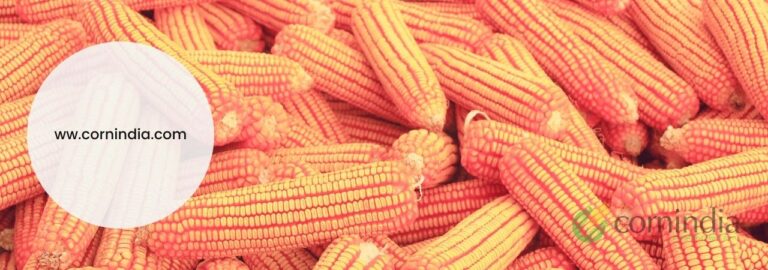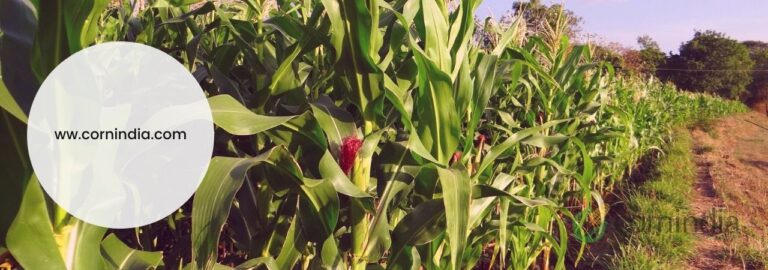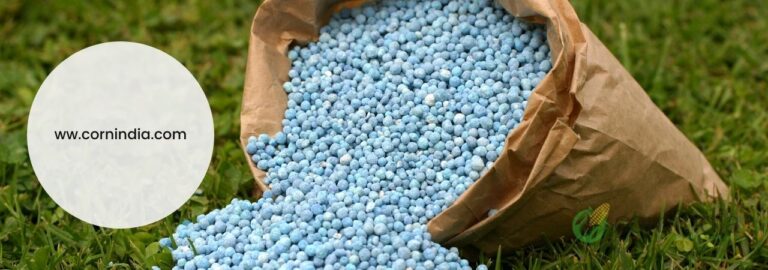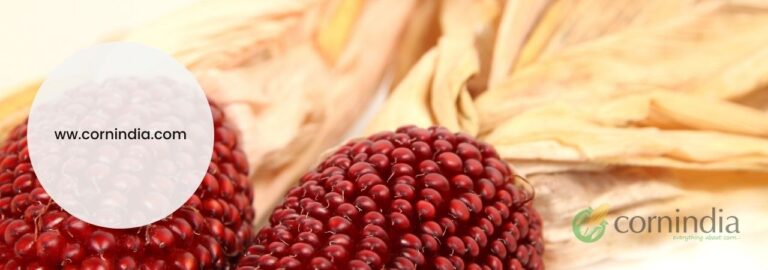
Importance of maize or any crop can be judged by its area, production utilisation and share in trade. The same criteria or standards can be applied to maize to judge its importance as cereal crop.
Table of Contents
Area and Production
Maize is the most widely distributed crop in the world. It is cultivated in tropics, sub-tropics and temperate regions unto 500 and from sea level to 4000 m. Al under irrigated to Semi-arid conditions. Tremendous choices are available as regards varieties maturing in 85 days to more than 200 days with variability in grain colour and texture etc.
As regards area and production maize ranks third in world production (380 MT from 120MH) following wheat (440 MT from 240 MH) and rice (420 MT from 140 MH). This represents 24% of the total cereal production as compared to 27 % for wheat and 25% for rice.
More than seventy countries (including 15 developed and 58 developing) produce maize having more than 1, 00,000 ha. Indonesia, Philippines, France, Romania, Yugoslavia and USSR are the other major maize-producing countries. Within India U.P., Bihar, Rajasthan, Madhya Pradesh and Punjab are the maize-producing states. Andhra Pradesh ranks 5th with about 3.2 in producing 8.0 Lt of grains.
Importance of Maize and Utilisation
Maize is an important cereal in many developed and developing countries of the world. It is widely used for animal feed and industrial raw material in the developed countries whereas the developing countries use it in general for feed. In Indian Agriculture, Maize occupies a prominent position and each part of the maize plant is put to one or the other use and nothing goes as waste.
Among the cereal crops in India, maize with an annual production of around 10 million tones covering 6 million hectares ranks fifth in area next to rice, wheat, jower and bajra, fourth n production whereas in productivity it ranks at third position. Maize production in the country is fully utilized domestically for food and exports are negligible. Even with the spectacular increase during the recent years in the production of the finer cereals i.e., rice, wheat or also jowar coarse grain, there is no problem with a surplus of maize.
It is, therefore, inferred that with the increasing demand for, food grains relative to population growth maize will hold its share as an important cereal food grain. Taking into consideration that maize contributes about 6% to the total cereal production and about 23% to the total course grains, the requirement of maize for food will be about 8.25 million tonnes by 2000 A.D.
Conservative estimates on the demands for other uses of maize within the country and export worked out by the study team on maize constituted by the National Commission by 2000A.D. will be about 7.43 million tonnes. The details of these are: Considering the importance of maize in the country for food and industrial uses, the National Commission on Agriculture suggested an increase in the supply of this commodity to about 24 million tonnes.
To attain this level of production, it is imperative to step up productivity from the existing national average to a level of 2.5 tonnes/ha and also an increase in the area under the crop from 6 to 9 million hectares. Its growth habits and breeding systems have made it an extremely useful plant for scientific qualities etc. have come through maize-based research programmes.
Because of its worldwide distribution and relatively lower price maize has a wider range of uses. It is used directly for human consumption, in industrially processed foods, as Live-stock feed and in industrially non-food products such as starches, acids and alcohols. Recently, there has been interest in using maize for the production of ethanol a substitute for petroleum-based fuels.
As in production and yield, variation exists in utilization patterns between developed and developing countries.
It gives the highest average grain yield (30.5 Qt la/ha) as compared to major cereals such as wheat (19.0 qt ls/ha) and rice (25.9 Qt ls/ha). The status maize enjoys as one of the highest yielding among the world’s major crops of its own nature viz., efficient utilization of radiant energy and fixations of carbon dioxide from the atmosphere. Also when compared to other crops, the economics of maize cultivation is lowest. Among cereals and millets, oil is extracted only from maize.
India occupies fifth place in average under maize in the world, the first four being the US, Brazil, China and Mexico Respectively and ranks tenth in production. Maize as a crop has multiple uses but is chiefly grown for human and Livestock consumption. The seeds and the cobs are used as basic raw materials in various industries. The seeds are processed and converted into needed preparations, flakes, grits and pops for human consumption.
Nutritionally, maize contains 60 to 68% starch and 7 to 15% protein. Opaque-seeded types are more nutrition and contain a high percentage of essential amino acids. The embryo which forms about 12% of the whole grain is the source of protein, fats and sugars. Yellow maize is the richest source of Vitamin-A. Maize has more riboflavin than wheat or rice and is rich in phosphorous and potash. Maize contains 1.2 to 5.7 % edible oil.
Varieties developed particularly for oil production contain as much as 14%. Maize oil is widely used as a cooking medium and for the manufacturing of hydrogenated oil. The oil has the quality of reducing cholesterol in the human blood like sunflower oil. The fat content of the oil is about 80%. Maize acts as a source in the manufacture of starch, syrup, dextrose, oil, gelatin, lactic acid etc. Corn flour is used as a thickening agent in the preparation of many edibles like soups, sauces and custard powder.
Corn syrup is used as an agent in confectionary units. Corn sugar (dextrose) is used in pharmaceutical formulations as s sweetening agent in soft drinks etc. Corn gel on account of its moisture retention character is used as a bonding agent for ice-cream cones, and as a dry Dustin agent for baking products.
Forage and Feed
The next important field where maize finds extensive use is for livestock feeds viz, cattle Poultry and piggery both in the form of seeds and fodder. The green fodder can be fed to milch cattle to boost milk production to a considerable extent; “South African Maize” is a best-suited variety for fodder. The crop has to be harvested when the grains are in the milky stage, This variety is supposed to have a Lactogenic effect hence specially suited for milch cattle. The digestion ability of maize fodder is higher than sorghum, bajra and other non-leguminous forage crops.
Maize plant does not have any problem of hydrogenic acid or prussic acid production, hence the necessary crop can be harvested and fed to cattle at any stage of its growth, of course, ideal stage of harvest for green fodder mid dough stage, is when the dry matter content and digestibility are more desirable. The high carotene content of yellow maize is considered to be very useful in importing yellow colour to egg yolk and yellow tinge to the milk. No other concentrate is yet to be known to substitute maize in this respect.
Food
In most of the developing countries, maize is consumed directly as food. In India, over 85 per cent of maize production is used as food. The most commonly used forms are (1) Chapattis (2) porridges of various forms (iii) boiled or roasted green ears (iv) breakfast foods like corn flakes and (v) Popcorn. For the (iii) and (v) categories sweet and Popcorn varieties are specially grown in USA and Europe.
Other Uses:
The maize cob, the central rachis to which the grains are attached remains as an agricultural waste after threshing; it finds many important agricultural and industrial uses. Approximately it forms 15 to 18% of the total ear weight and contains 35% cellulose, 40% pentose and 15% lignins. Their uses in agriculture include as a litter for poultry and as a soil conditioner.
Industrial Uses:
The industrial uses based on the physical properties of the cob, when ground to powder, are as fillers for explosives in the manufacture of plastics, glues, adhesives, rayon, resin, vinegar and artificial leather and as diluents and carriers in the formulation of insecticides and pesticides. Based on the chemical properties the processed cobs find their use in the manufacture of furfurol, fermentable sugars, solvents, liquid fuels, charcoal gas and other chemicals by destructive distillation, and also in the manufacture of pulp, paper and hard boards. The water in in which the maize grains are soaked for the manufacture of glucose is used for growing penicillin moulds.
The economics of cultivation of maize, jowar and wheat are almost the same: but the cost-benefit ratio in the case of maize is highest because of its high productivity. For the processing of maize and its products, mini factories should be set up around maize growing areas of our country. This will enhance the demand for maize and its products and the growers can be directed their produce directly to the factories.
Like all other cereal crops, maize protein, even though it is at a reasonably high level is deficient in essential acids like lysine and tryptophan content. In more recent years opaque 2 hybrids and composite varieties developed in several countries have been shown to have twice the lysine and tryptophan content. In India, also three nutritionally superior opaque-2 composite varieties (Shakti, Rattan and Protima) developed in the country were released for commercial cultivation in 1970.
Under poor storage conditions, maize grains develops mould which upon eating are extremely harmful to the consumer and may even prove fatal. Unlike local maize varieties, Shakti and Ratan were shown to be resistant to the production of toxins even if it was infected with the fungus. The opaque strains thus in addition to avoiding the hazards of toxins would also promote better growth and development.
Trade
Among cereal grains maize trade has expanded most rapidly increasing from 20 million tonnes in 1961-65 to 60 million tonnes in 1977-79 representing an annual growth rate of 8%. The proportion of world production with trade increased from 10% to 20%. Annual wheat traded was 80 million tones with a growth rate being 3.5% and the proportion remaining at 16%. The rice trade also increased at about the same rate which was 11 million tonnes and less than 5% of world production.
Considering only coarse grain grade, maize accounts for 70% and Sorghum 11%. The chief exporters of maize are the U.S.A. (74%), Thailand, Argentina, France, and South Africa. The importing countries are the U.S.S.R., Taiwan, Kores, China, Brazil, Egypt, the U.K., Japan and several European countries.
India exported about 18,000 tonnes only.
Future Prospects
The demand for cereals in India will inexorably increase during the next two decades. With the population expected to increase to 985 million by the year 2000, the domestic requirements of food grains at approximately the current levels of consumption have been estimated by the National Commission on Agriculture to be 225 million tonnes in 2000.
Maize, due to its inherently higher yield potential, too National Commission on Agriculture, after careful consideration of the available data, has observed that maize will have to contribute more to meeting India’s food needs during the next 25 years.
The commission had suggested that maize in the country be increased from 5.7 million hectares to 9.0 million hectares i.e., on the increase of 60% of the area by 2000 A.D. and that the yield level be raised to 2.65tonnes/ha to achieve a production of about 24 million hectares. Hence, at the rate of 60% increase in the area, maize has to be cultivated on 0.434 million ha. From this area, the production target envisaged for A.P. by the turn of the 20th Century works out to be 1.5 million tonnes i.e., 2.65 tonnes/ha. However, going by the experience in the previous decade the targeted area and the production can be exceeded within a decade.






